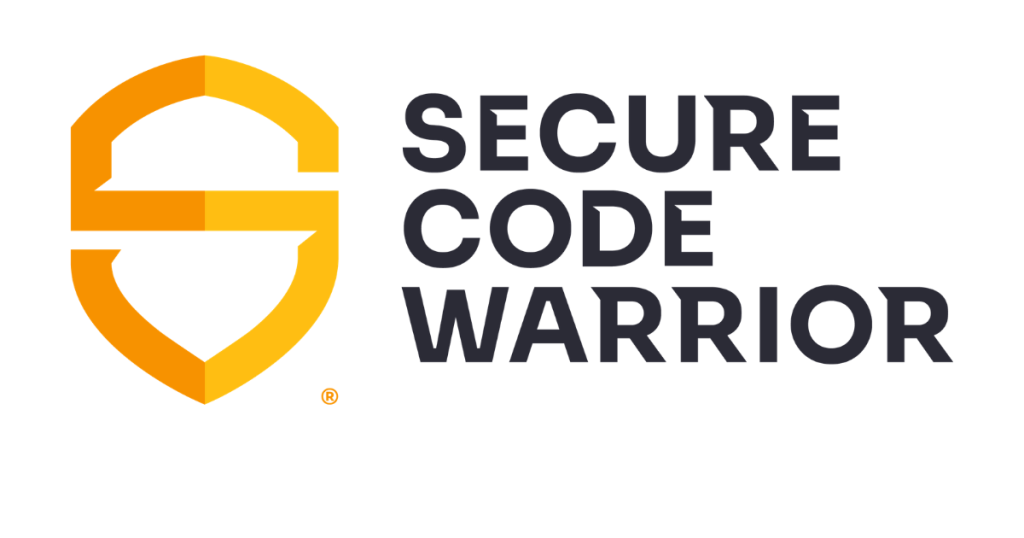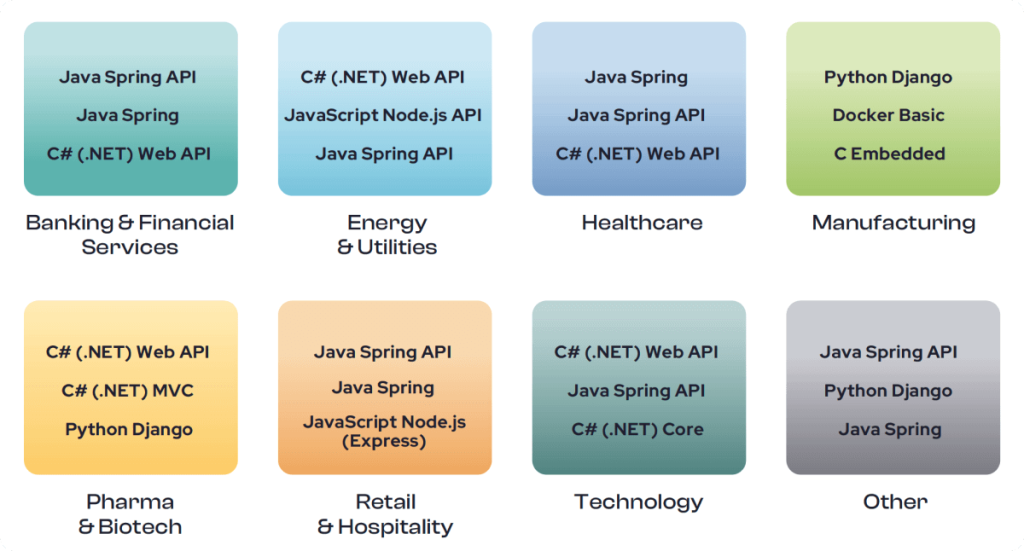What is Secure Code Warrior?

Secure Code Warrior (SCW) is a leading developer-centric security platform that aims to equip developers with the tools and knowledge to write secure code from the start. It focuses on shifting left security, integrating security practices into the development lifecycle to address vulnerabilities early and minimize their impact.
Top 10 use cases of Secure Code Warrior?
Top 10 Use Cases of Secure Code Warrior:
- Train developers in secure coding practices: SCW offers interactive learning modules, hands-on challenges, and personalized learning paths to equip developers with essential security skills for various programming languages and frameworks.
- Automate security checks throughout the development cycle: SCW integrates with development tools and CI/CD pipelines to seamlessly perform static code analysis, software composition analysis, and other security checks during coding, testing, and deployment.
- Identify and prioritize vulnerabilities: SCW scans codebases for vulnerabilities, categorizes them based on severity and likelihood, and prioritizes them for remediation, guiding developers towards the most impactful fixes.
- Provide contextual guidance and remediation suggestions: SCW doesn’t just identify vulnerabilities; it also offers specific recommendations for fixing them, including code snippets and links to relevant learning resources.
- Promote a culture of developer ownership of security: SCW empowers developers to take responsibility for their code’s security, fostering a collaborative environment where security becomes an integral part of the development process.
- Reduce security debt and improve software quality: By addressing vulnerabilities early in the development cycle, SCW helps organizations decrease their security debt and build more secure and reliable software.
- Comply with security regulations and standards: SCW aligns with industry standards like OWASP, NIST, PCI DSS, and GDPR, simplifying compliance efforts for organizations.
- Improve team communication and collaboration: SCW’s features like vulnerability discussions and project dashboards facilitate communication and collaboration between developers, security professionals, and other stakeholders.
- Support continuous improvement: SCW offers metrics and insights into team security progress, allowing organizations to measure the effectiveness of their security training and practices, and continuously improve their security posture.
- Integrate seamlessly with existing workflows: SCW plugs seamlessly into existing development tools and platforms, minimizing disruption and maximizing adoption among developers.
Overall, Secure Code Warrior helps organizations move beyond traditional top-down security approaches by equipping developers with the knowledge and tools to build secure software from the ground up. This developer-centric approach leads to more secure software, faster delivery times, and reduced security debt.
What are the feature of Secure Code Warrior?
Here are some of the key features of Secure Code Warrior (SCW):
Developer Training:
- Interactive Learning Modules: Cover a wide range of secure coding topics, including OWASP Top 10, injection attacks, authentication, and more.
- Hands-on Challenges: Allow developers to practice secure coding skills in a gamified environment, fixing vulnerabilities in real-world code snippets.
- Personalized Learning Paths: Tailor training to individual skill levels and preferred learning styles.
- Contextual Guidance: Provide relevant tips and best practices within the development environment.
- Skills Assessment and Measurement: Track progress and identify areas for improvement.
Security Testing and Analysis:
- Static Code Analysis (SAST): Scans code for vulnerabilities during development, providing real-time feedback.
- Software Composition Analysis (SCA): Identifies vulnerabilities and license compliance issues in open-source components.
- Integration with IDEs and CI/CD Pipelines: Automates security checks throughout the development process.
- Vulnerability Prioritization: Helps focus remediation efforts on the most critical issues.
Remediation Guidance:
- Context-Specific Fixes: Suggests code snippets and resources for addressing vulnerabilities.
- Secure Coding Best Practices: Offers recommendations for writing secure code proactively.
Collaboration and Reporting:
- Team Dashboards: Track security progress and metrics across projects.
- Vulnerability Discussions: Facilitate communication and collaboration on remediation efforts.
- Compliance Reports: Generate evidence of compliance with security standards.
Additional Features:
- Customizable Learning Content: Create or adapt training materials to match specific needs.
- Tournament Mode: Foster friendly competition and motivation among developers.
- Integration with Bug Trackers: Link vulnerabilities to existing issue tracking systems.
SCW’s features align with its core mission of empowering developers to champion secure coding practices, leading to more secure software and a proactive security culture within organizations.
How Secure Code Warrior works and Architecture?

Here’s a breakdown of how Secure Code Warrior (SCW) works and its architecture:
Key Components:
- Learning Platform: Houses interactive modules, challenges, and learning paths for developer training.
- Security Engine: Conducts static code analysis, software composition analysis, and vulnerability prioritization.
- Integration Hub: Connects with development tools, CI/CD pipelines, and issue trackers.
- Collaboration Platform: Facilitates communication and tracking of security progress.
- Reporting and Analytics: Generates reports on security posture, compliance, and team performance.
Workflow:
- Developer Training:
- Developers complete interactive modules, challenges, and hands-on practice to learn secure coding principles.
- SCW tracks progress and adjusts learning paths based on individual skills and performance.
- Security Integration:
- SCW integrates with IDEs, version control systems, and CI/CD pipelines for seamless security checks during development.
- Developers receive real-time feedback on vulnerabilities within their code.
- Vulnerability Identification and Prioritization:
- SCW scans code for vulnerabilities, categorizes them based on severity and likelihood, and prioritizes them for remediation.
- Developers receive context-specific guidance for fixing vulnerabilities.
- Collaboration and Remediation:
- Developers discuss vulnerabilities within SCW, share knowledge, and collaborate on fixes.
- SCW tracks remediation progress and updates dashboards and reports accordingly.
- Continuous Improvement:
- SCW provides insights into team security progress and identifies areas for further training or process enhancements.
- Organizations use metrics to measure the effectiveness of their security initiatives and track progress towards security goals.
Architecture:
- Cloud-Based: Delivered as a SaaS solution, accessible through web browsers and APIs.
- Modular: Consists of independent, interchangeable components, allowing customization and integration with existing tools.
- Scalable: Accommodates projects of varying sizes and complexities.
Key Advantages:
- Developer-Centric: Focuses on equipping developers with the skills and tools to write secure code, fostering ownership of security.
- Shift Left Security: Integrates security seamlessly into the development process, addressing vulnerabilities early and reducing costs.
- Contextual Guidance: Provides relevant and actionable feedback within developers’ workflows, aiding in rapid remediation.
- Collaboration and Visibility: Facilitates communication and transparency among developers and security teams, leading to collective improvement.
- Continuous Learning and Improvement: Promotes ongoing security education and supports organizational efforts to enhance security posture over time.
Overall, SCW’s architecture supports its mission to empower developers and shift security left, enabling organizations to build more secure software and cultivate a proactive security culture.
Basic Tutorials of Secure Code Warrior: Getting Started

Following is a step-by-step Basic Tutorials of Secure Code Warrior :
1. Accessing the Platform:
- Log in to the Secure Code Warrior platform using your provided credentials.
- If you’re new, create an account or request access from your organization’s administrator.
2. Getting Started with Training:
- Explore the available learning modules and challenges.
- Choose a module or challenge that aligns with your interests or skill level.
- Complete the interactive lessons and exercises, applying secure coding principles in practice.
- Utilize SCW’s hint system and resources for assistance if needed.
3. Integrating with Development Tools:
- Install the SCW plugin for your preferred IDE (e.g., Visual Studio Code, IntelliJ IDEA).
- Follow the plugin’s instructions to connect it to your SCW account.
- Enable real-time SAST feedback within your coding environment.
4. Scanning Code for Vulnerabilities:
- Access the “Scan” or “Analysis” section of the platform.
- Upload code or connect to your repositories.
- Initiate a scan to identify vulnerabilities.
- Review the scan results, which categorize vulnerabilities by type, severity, and location.
5. Prioritizing and Fixing Vulnerabilities:
- Focus on fixing high-severity vulnerabilities first.
- Utilize SCW’s context-specific guidance and code snippets for remediation.
- Re-scan code after making fixes to ensure vulnerabilities have been addressed.
6. Tracking Progress and Collaboration:
- View your individual progress and achievements within SCW.
- Participate in team dashboards and discussions to collaborate on security goals.
- Utilize reporting features to track overall security posture and compliance status.
7. Customizing and Continuous Learning:
- Tailor learning content and challenges to match your specific needs and languages.
- Join tournaments or challenges to test your skills and engage with the community.
- Explore additional SCW features, such as software composition analysis (SCA) and integration with bug trackers.
Key Points:
- Seek assistance from your organization’s SCW administrator or security team if needed.
- Embrace continuous learning and practice to solidify your secure coding skills.
Note:
- Specific steps and interfaces may vary depending on your SCW version and integrations.
- Active engagement and hands-on practice are crucial for effective learning and behavior change.
- Secure coding is an ongoing journey, not a one-time destination!
- Mutual of Omaha: Selection and Interview process, Questions/Answers - April 15, 2024
- AES: Selection and Interview process, Questions/Answers - April 15, 2024
- Amphenol: Selection and Interview process, Questions/Answers - April 15, 2024

